Harvesting Waste Energy -纳米结构热电材料
Harvesting Waste Energy - Nanostructured Thermoelectric Materials
Associate Professor Huey Hoon HNG, Associate Chair (Academic), School of Materials Science & Engineering, Nanyang Technological University, Singapore. Corresponding author: ashhhng@ntu.edu.sg
Due to the ever increasing energy demand and growing global concern over the environmental impact of CO2 emissions, there is a need to seek solutions to transit from fossil fuels to sustainable energy.
It is known that of all the primary energy we harness and use, only 30% is translated into useful work. A staggering 70% is wasted as dissipated heat during energy conversion, transportation and storage. This huge loss is itself a source of recyclable energy. If the waste heat leakage can be minimized by having the heat harnessed, stored and reused, the additional available energy resources could be huge.1
Thermoelectric Materials
Thermoelectric (TE) materials hold great promise for converting waste heat energy into electricity. TE systems have many unique advantages, e.g. silent, reliable and scalable. However, the present use of TE devices is limited by their low efficiencies.2
To achieve the goal of high-efficiency energy conversion as well as cost effectiveness, the current traditional TE materials are not satisfactory. New generation TE materials have to be developed to bring about foreseeable impacts.
Energy Conversion Efficiency of Thermoelectric Materials
The energy conversion efficiency of a TE material can be evaluated by a dimensionless figure-of-merit
ZT = S2T/(rk),
where S, T, r and k are the Seebeck coefficient (also called thermopower), absolute temperature, electrical resistivity and thermal conductivity, respectively.3 Excellent TE materials 首ld exhibit a large power factor (S2/r) for electrical properties as well as low thermal conductivity.
Although these parameters are inter-dependent in bulk materials, making it difficult to optimize the ZT values, several processing techniques have been applied to fabricate nano-materials or nano-composite materials, where the parameters in low-dimension can be varied independently as predicted theoretically.and demonstrated experimentally.4
In this article, several nanostructuring approaches for TE enhancement in different materials will be introduced.
Bismuth Telluride Thermoelectric Materials
Bismuth telluride (Bi2Te3) based TE materials are the most established materials for near room temperature applications, with ZT of ~ 1. Enhancements in ZT have been achieved in low dimension superlattice structure as well as in bulk nanostructured materials.3,5 The presence of nanostructures with sizes smaller than a phonon mean the free path can greatly enhance phonon scattering by scattering mid and long wavelength phonons, resulting in marked decrease in thermal conductivity. However, due to the high density of grain boundaries, electrons are also scattered efficiently, leading to a concurrent decrease in electrical conductivity.
Hence, a practical solution will be the preparation of nanocomposites with controlled addition of a nanophase into the matrix phase. We have considered the approach of adding a nanophase with the same composition as the matrix phase. 6,7 In this process, the nanophase was prepared via a high throughput and economical melt spinning process. This process was implemented for both p-type Bi0.4Sb1.6Te3 and n-type Bi2Te3 systems. For n-type Bi2Te3, a maximum ZT of 1.18 at 42°C was obtained for the 10wt% nanocomposite while a maximum ZT of 1.80 was attained at 43°C for the p-type Bi0.4Sb1.6Te3 nanocomposite consisting 40wt% nanoinclusions. The significant improvement in ZT was attributed to the composites’ ability to retain a high power factor while at the same time drastically reducing thermal conductivity.
Figure 1. (a) Typical HRTEM and (b) SEM images of melt spun Bi2Te3 based composite materials and their enhanced ZT with decreased thermal conductivity of (c) p- and (d) n-type.
Compared with the decrease of thermal conductivity, which seems to be the primary benefit of nanostructuring for TE materials in most recent developments, the approach of power factor enhancement is more likely but has yet been rarely reported.8 We have demonstrated that by decreasing the grain size to de Broglie wavelength and the synthesis of a complex unit cell are effective for achieving high power factor.
20 nm Sb2Te3 nanoparticles directly synthesized by CVD method showed a higher Seebeck coefficient compared to the larger size nanoparticles (50nm and 100nm).9 Although the conductivity decreased a little, the smaller size particle still demonstrated a higher power factor.
Similarly, uniformly mixed PbTe-PtTe2 multi-phased nanoparticles showed an enhancement in the power factor by more than two orders of magnitude as compared to pure PbTe through tuning the charge carrier concentration by adjusting the PbTe:PtTe2 ratio.10
Figure 2. (a) SEM image of the Sb2Te3 nanoparticle thin film and (b) its electrical properties.
Figure 3. (a) TEM image of PbTe-PtTe2 binary phased nanoparticles with phase ratio XPbTe = 0.5. (b) Enhancement of power factor in PbTe-PtTe2 binary phased nanoparticle samples with various XPbTe values.
Graphene and Carbon Nanotubes as Thermoelectric Materials
Apart from traditional TE materials, few layers graphene (FLG) and carbon nanotubes (CNTs) as novel TE materials have also been investigated.11,12 Both CNTs and FLG were modified by plasma treatment and exhibit enhanced TE properties. The process of plasma treatment induced defects on the FLG and CNTs and caused the following changes:
band gap opening modification of carrier concentration and enhancement of phonon scatteringThese modifications lead to enhancement in TE properties of the FLG and CNTs. The FLG films were modified by oxygen plasma and CNTs by argon plasma.
The Seebeck coefficient of FLG was significantly enhanced to ~700 μV/K as compared to ~ 80 μV/K for the pristine FLG films at 575K.11 Meanwhile, the electrical conductivity decrease slightly but still remained at a high value of ~104 S/m. Consequently, the max power factor achieved was ~4.5×10-3 WK-2m-1, which was 15 times higher than that of pristine FLG films.
Figure 4. (a) HRTEM images of FLG films after oxygen plasma treatment. The inset shows the corresponding SAED pattern, which confirms the amorphous status for samples after oxygen plasma treatment. The yellow circles highlight small crystals of caron in such films while the red circles point out the disordered arrangement of carbon atoms. (b) Power factor for the FLG films after different oxygen plasma treatments.
For the CNTs, the samples were prepared as flexible papers. The Seebeck coefficient was increased to ~350 μV/K at 670K, a 7 fold increase as compared to the pristine material at same temperature. Similar to FLG, the electrical conductivity of the plasma treated CNTs also decreased but remained at an acceptable value. The thermal conductivity of CNT papers was very low due to the formation of random networks. In particular, the plasma treated sample showed a very low thermal conductivity of ~0.3 W/(m×K). The ZT value of CNT papers were significantly enhanced to 0.4 from 0.01 after plasma treatment at 670K. Such improvement demonstrate the possibly of using plasma treated CNT papers to fabricate flexible TE devices.12
Figure 5. (a) Optical images of flexsible CNT paper. (b) Enhancement of ZT and Seebeck coefficient of these CNT paper after different Ar plasma treatment durations.
Substitutional Doping with Preferred Orientation Control
Another approach to enhance power factor is the combination of substitutional doping with preferred orientation control using pulsed laser deposition (PLD) technique. For example, Ca3Co4O9 is one of the best TE oxides due to its high temperature ZT of 0.83 at 1000K.13 However, due to the strong anisotropy in crystal growth and electrical transport, large size single crystals are difficult to fabricate.13 By using PLD, thin films that were well crystallized with perfect c-axis orientation could be prepared, and the in-plane electrical properties were found to be comparable to single crystals.14 Furthermore, Bi substitution could reduce the electrical resistivity of the thin films while enhancing the Seebeck coefficient. The power factor of Bi-doped Ca3Co4O9-based thin films were found to improve ~21% and reached 1.016 mWm-1K-2 at 950 K.15
Figure 6. (a) TEM image of Bi-doped Ca3Co4O9 thin film. (b) Enhancement of Seebeck coefficient and power factor by Bi substitution.
Summary
In summary, nanostructuring can be applied by various advanced techniques and can provide great opportunity to improve the TE performance of both conventional and new materials. Further optimization and sca领 will broaden the application of TE devices in the near future so that they may be used to improve energy efficiency and decrease CO2 emissions.
全部评论(0条)
推荐阅读
-
- 祝贺中国科学家研制出高性能塑料基热电材料
- 祝贺中国科学家研制出高性能塑料基热电材料
-
- 用户速递 | 用于宽带和环保型光电子传感的纳米结构AgBiS2材料
- 应用方向:纳米材料
-
- No Time to Waste : TVOC数据分析的正确方式-Chromeleon
- 您还在用Excel处理TVOC数据嘛?
-
- No Time to Waste : TVOC数据分析的正确方式-Chromeleon
- 您还在用Excel处理TVOC数据嘛?
-
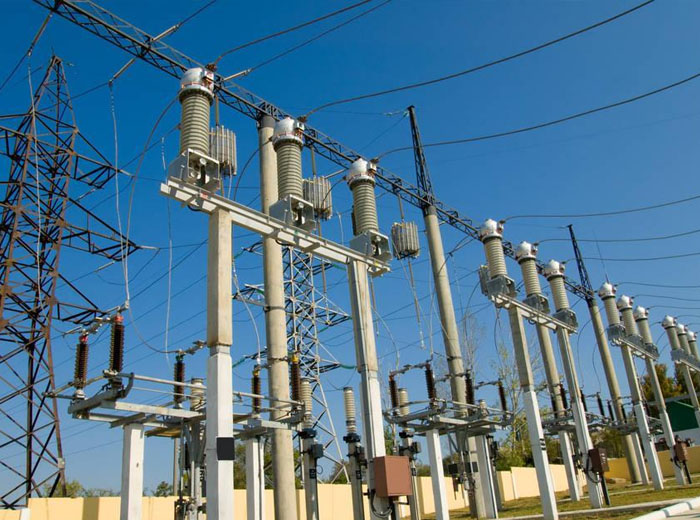
- 中国科学家高性能聚合物热电材料研制取得重大进展 能源革命如火如荼仪器发展要注意哪些机会?
- 随着5G技术在能源领域的广泛应用,如智能电厂、智能电网、智能煤矿等典型应用场景不断涌现,能源领域对高精度、高可靠性的测量和控制设备的需求日益增加。这要求仪器行业加快技术创新。
-
- 第15届原子尺度表面、界面和纳米结构国际会议
- 会议介绍第15届原子尺度表面、界面和纳米结构国际会议(ACSIN-15)在2024年5月10日—13日中国苏州
-
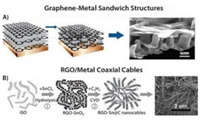
- 新型石墨烯基纳米结构的制备及功能化设计
- 近年来,化学家们已经学会了如何玩转"这种独特的材料,通过增强其可加工性和多功能性,并开发出不同的策略来对它进行功能化和加工。从廉价石墨开始生产石墨烯的方法已经得到了大规模的证明?
-
- Webinar丨利用掠入射 X 射线散射揭示薄膜中的纳米结构
- Webinar丨利用掠入射 X 射线散射揭示薄膜中的纳米结构
-

- 西安市顺利投产“生活垃圾无害化焚烧热电联产项目”
- 近日,陕西省关中协同发展重点项目及西安市的重点工程“西安蓝田生活垃圾无害化处理焚烧热电联产项目”顺利投产。该项目日处理垃圾可达2250吨,年发电量超过3亿千瓦时。
①本文由仪器网入驻的作者或注册的会员撰写并发布,观点仅代表作者本人,不代表仪器网立场。若内容侵犯到您的合法权益,请及时告诉,我们立即通知作者,并马上删除。
②凡本网注明"来源:仪器网"的所有作品,版权均属于仪器网,转载时须经本网同意,并请注明仪器网(www.yiqi.com)。
③本网转载并注明来源的作品,目的在于传递更多信息,并不代表本网赞同其观点或证实其内容的真实性,不承担此类作品侵权行为的直接责任及连带责任。其他媒体、网站或个人从本网转载时,必须保留本网注明的作品来源,并自负版权等法律责任。
④若本站内容侵犯到您的合法权益,请及时告诉,我们马上修改或删除。邮箱:hezou_yiqi

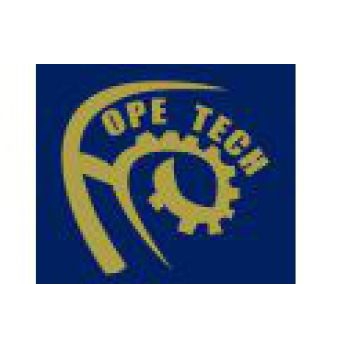









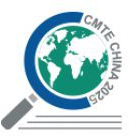

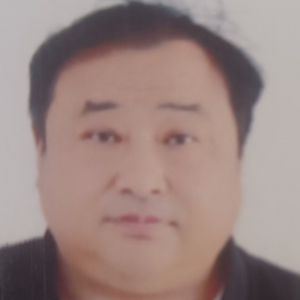
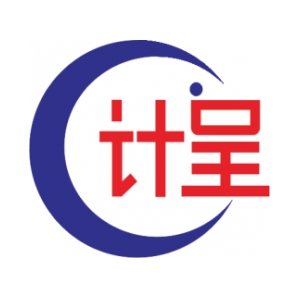





参与评论
登录后参与评论